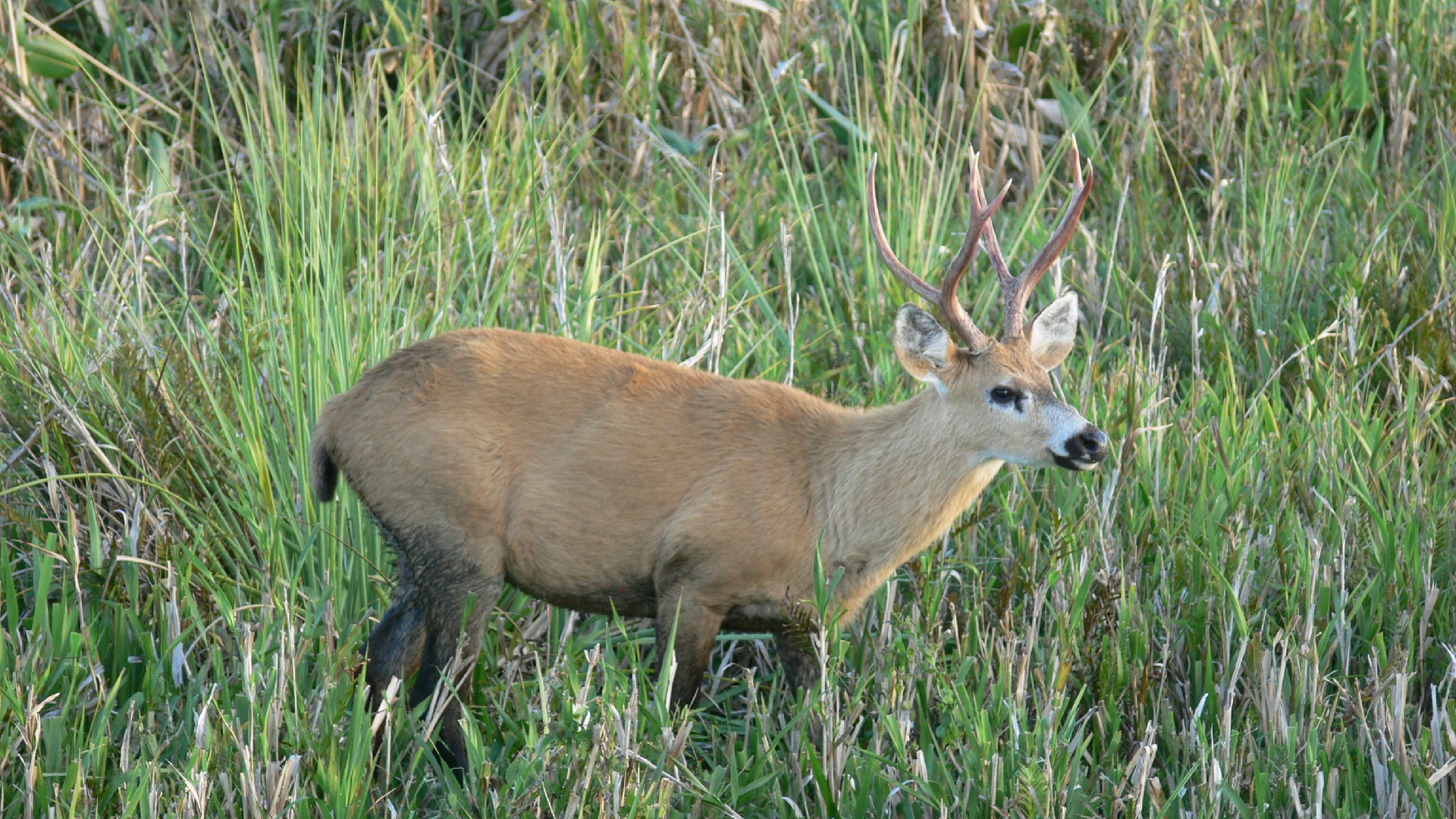Marsh deer
A species of Blastocerus Scientific name : Blastocerus dichotomus Genus : Blastocerus
Marsh deer, A species of Blastocerus
Scientific name: Blastocerus dichotomus
Genus: Blastocerus
Content
Description General Info
 Photo By Cambarellus , used under CC-BY-SA-4.0 /Cropped and compressed from original
Photo By Cambarellus , used under CC-BY-SA-4.0 /Cropped and compressed from original Description
They possess very large ears lined with white hairs, red-gold to tawny brown fur, blackish eyes and long dark legs. The hair turns darker during winter. There are also white marks on the hips and around the eyes. The legs are black below the tarsal as is the muzzle. The tail is of a paler reddish tone than the rest of the body on its upper part and black on the under part. The head-and-body length is 153 to 200 cm (5.02 to 6.56 ft), while the tail adds a further 12–16 cm (4.7–6.3 in). The height at the shoulder can range from 100 to 127 cm (3.28 to 4.17 ft). The hoof, which is large in relation to the body, has elastic interdigital membranes which are useful for swimming and walking on marshy surfaces. Only the males possess antlers which are ramified and reach a length of 60 cm (23 inches). An adult typically grows to a weight of 80 to 125 kg (176 to 276 lb), although an occasional big male can weigh up to 150 kg (330 lb). 
General Info
Lifespan
10-15 years
Diet
Marsh deer primarily subsists on a herbivorous diet, feeding predominantly on aquatic and marshland vegetation. Grasses, sedges, and water hyacinth constitute primary components of its vast dietary breadth.
Appearance
The marsh deer is a medium-sized deer, distinguished by its elongated body, thin legs and dense, rough-textured fur. The main coloration varies from reddish-brown to dark brown. Its most unique feature is the branched antlers in males, which are absent in females. In terms of size and coloration, there are no notable changes throughout their life stages.
Behavior
Marsh deer is a primarily nocturnal and semi-aquatic species, residing near swamps and rivers. Its social structure is solitary. For survival, it utilizes its camouflaging abilities in its natural habitat, disappearing amidst aquatic vegetation. Feeding predominantly on aquatic plants, the species is known for its unique foraging behavior, involving submerging or 'diving' into water.
Population
Decreasing